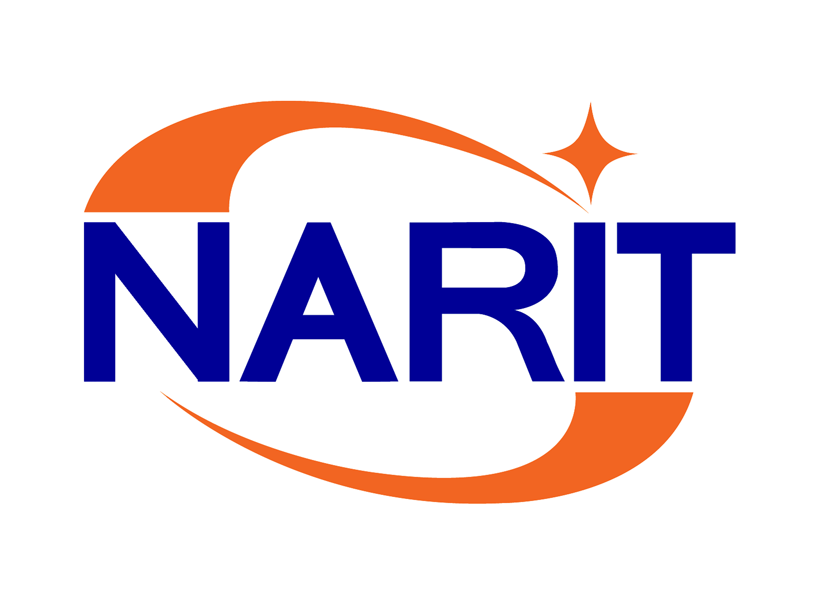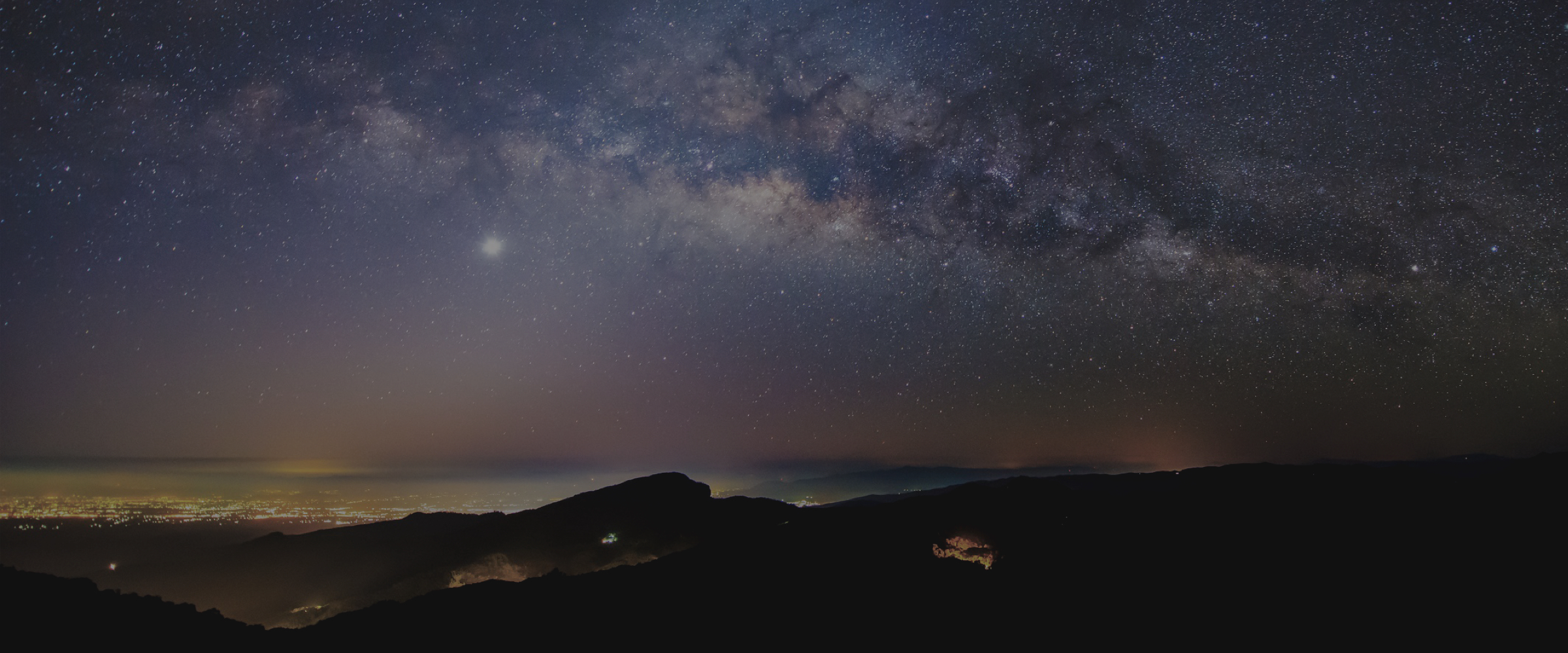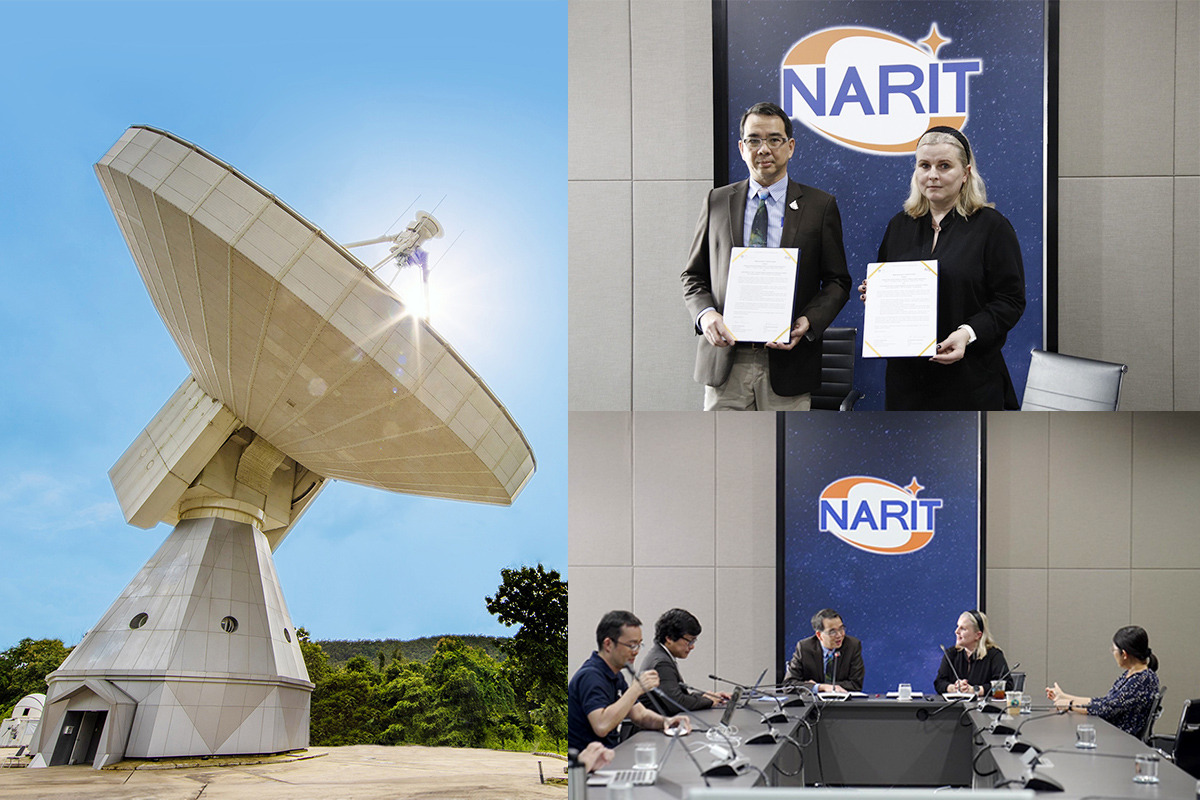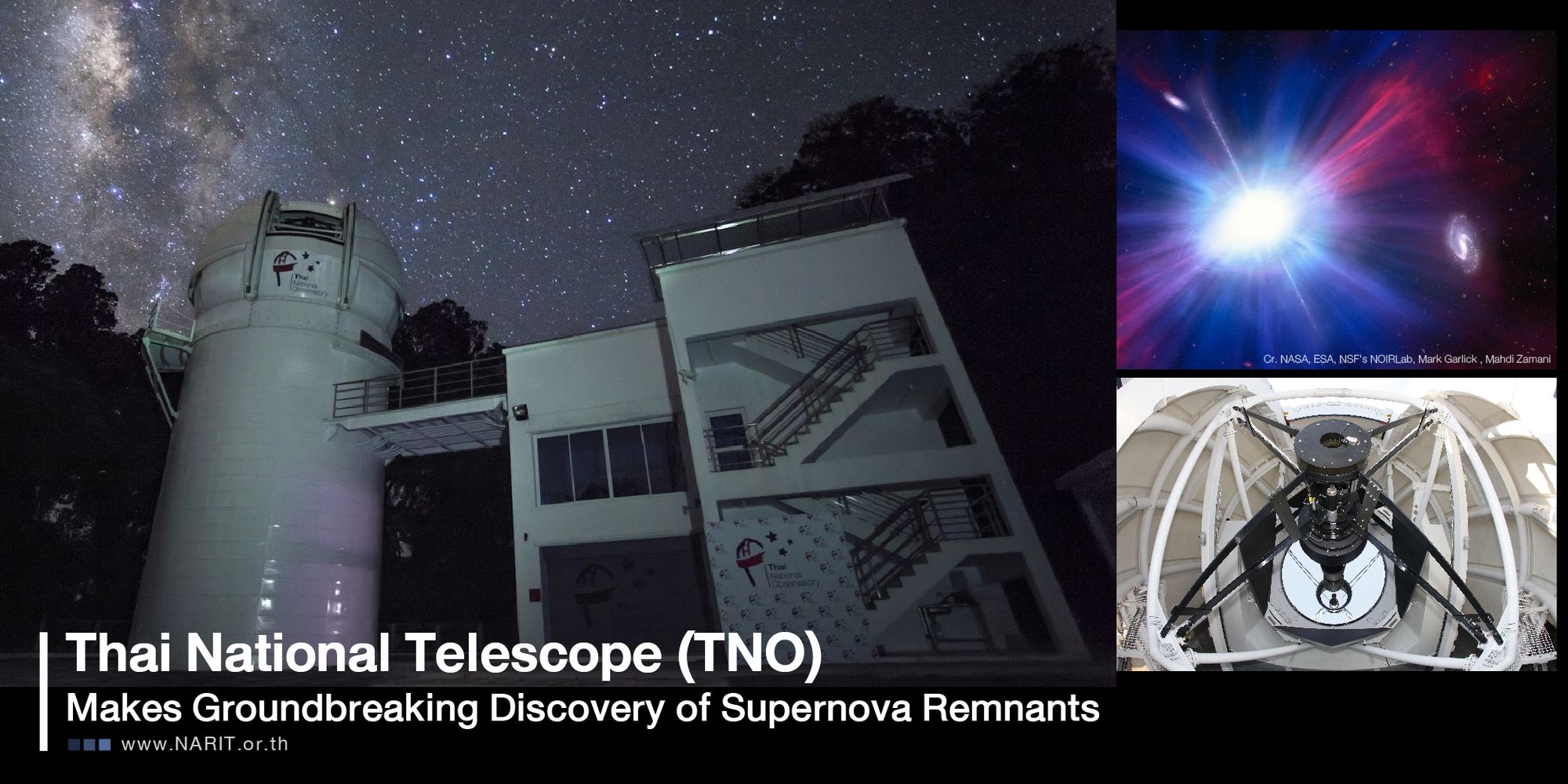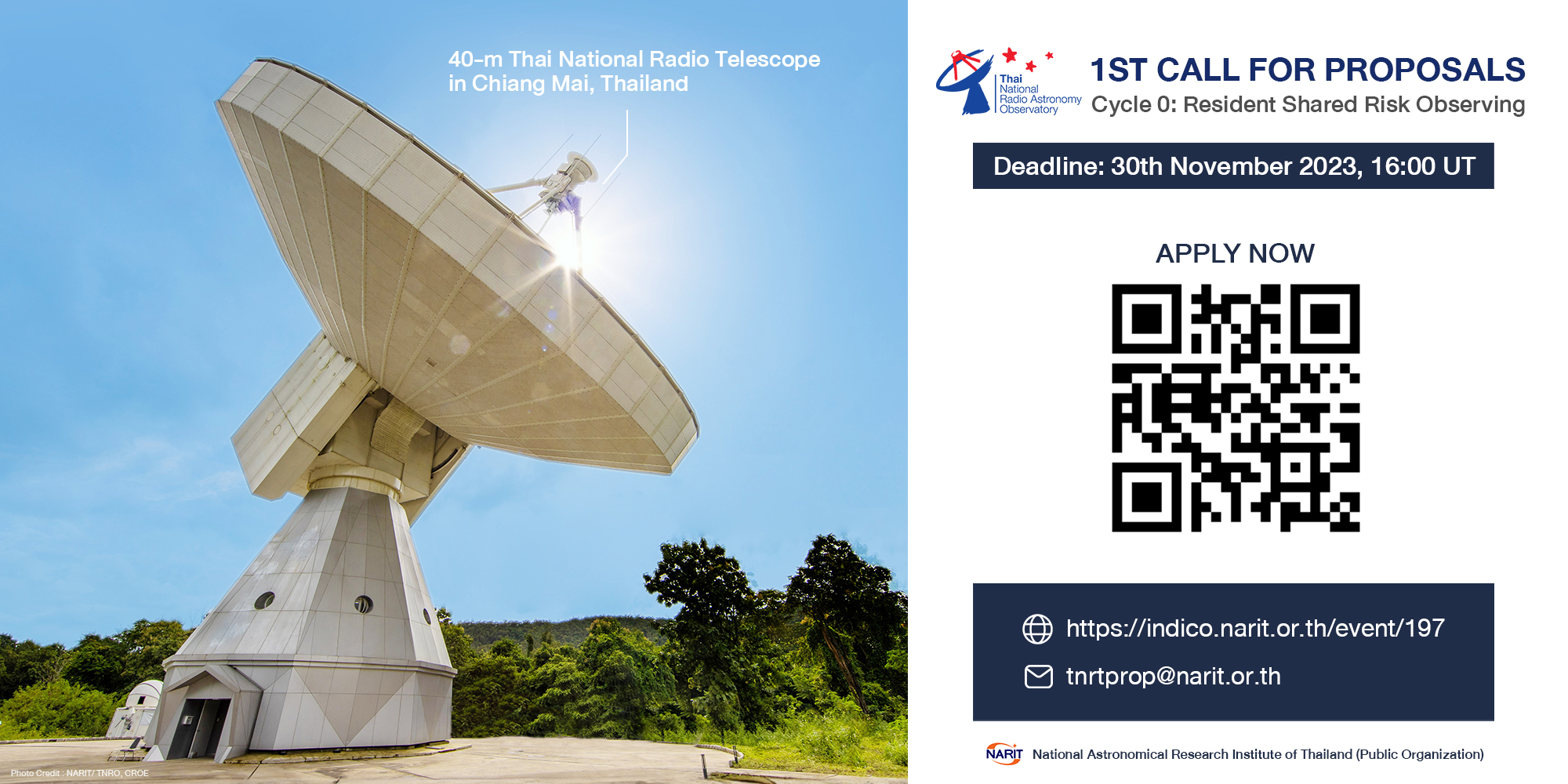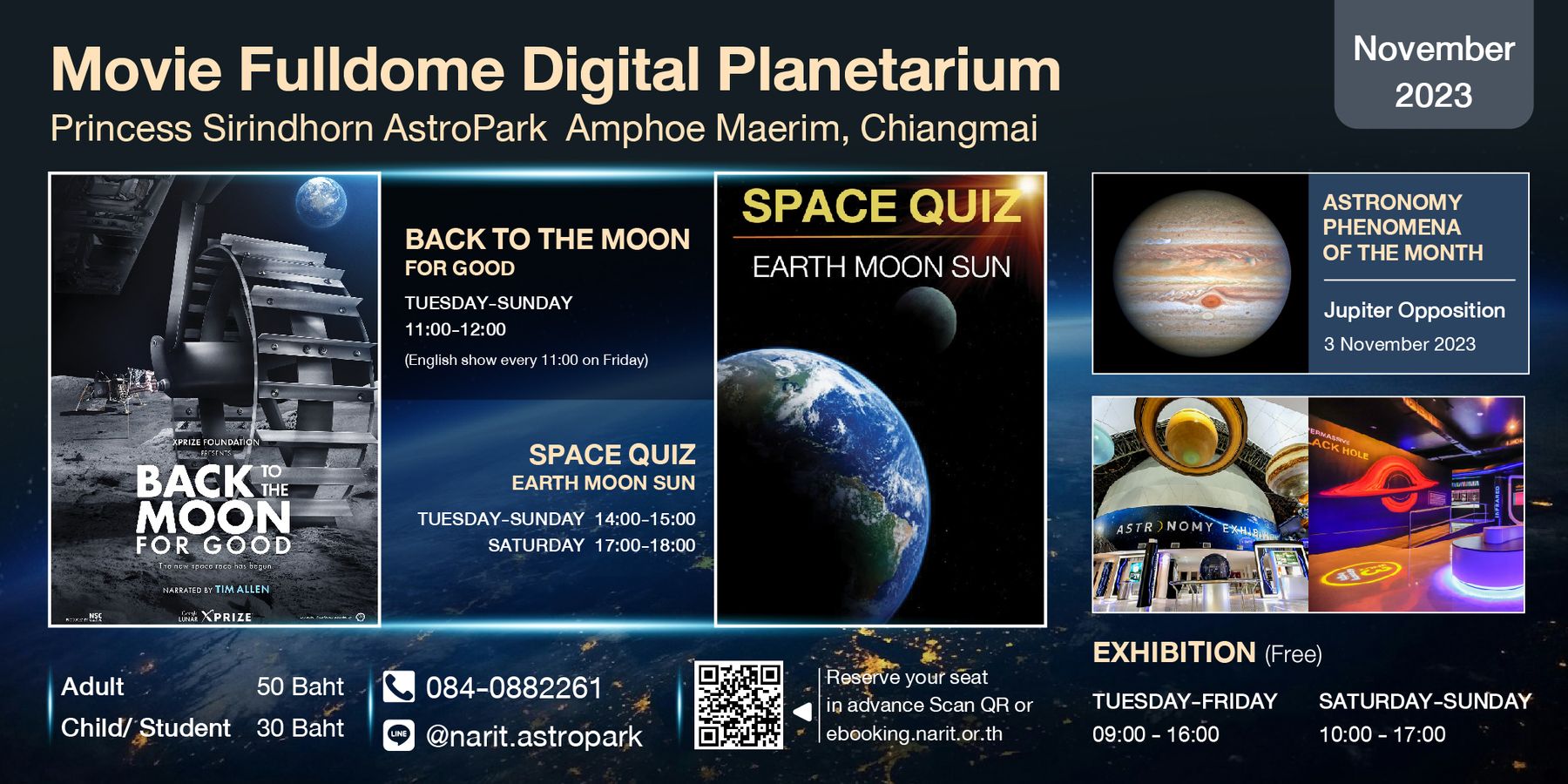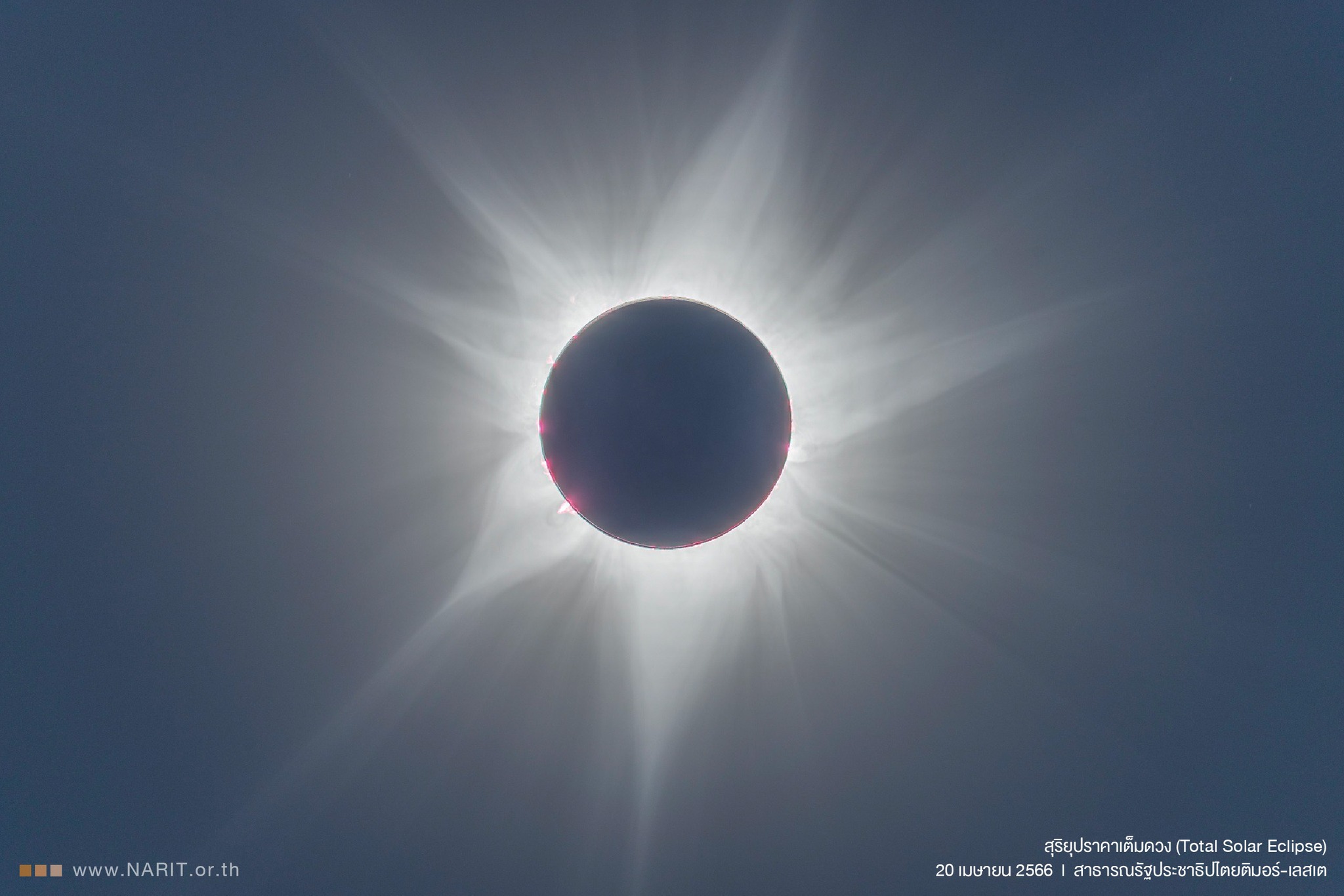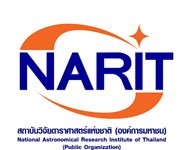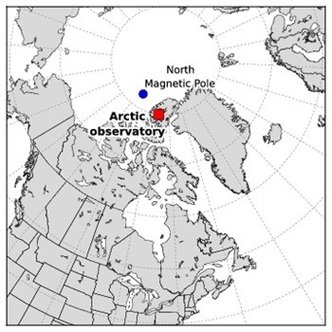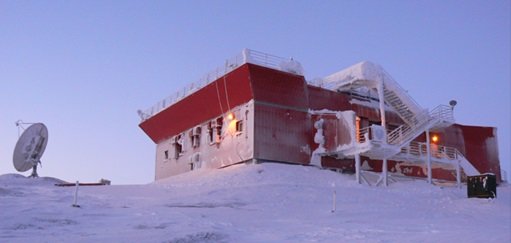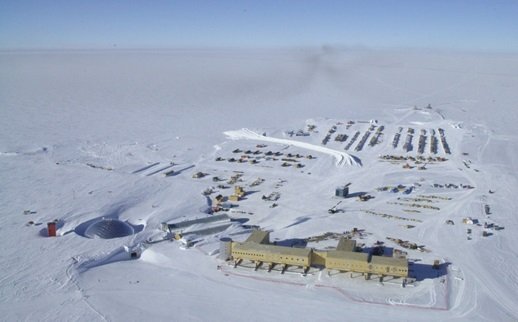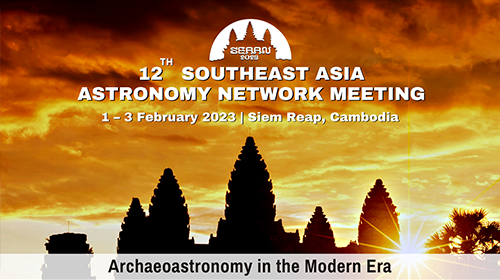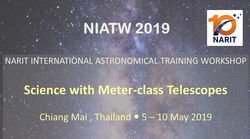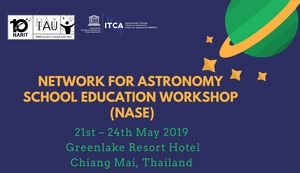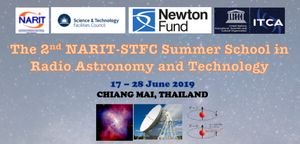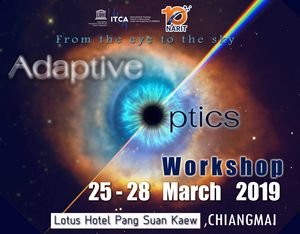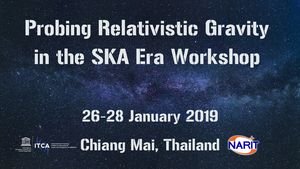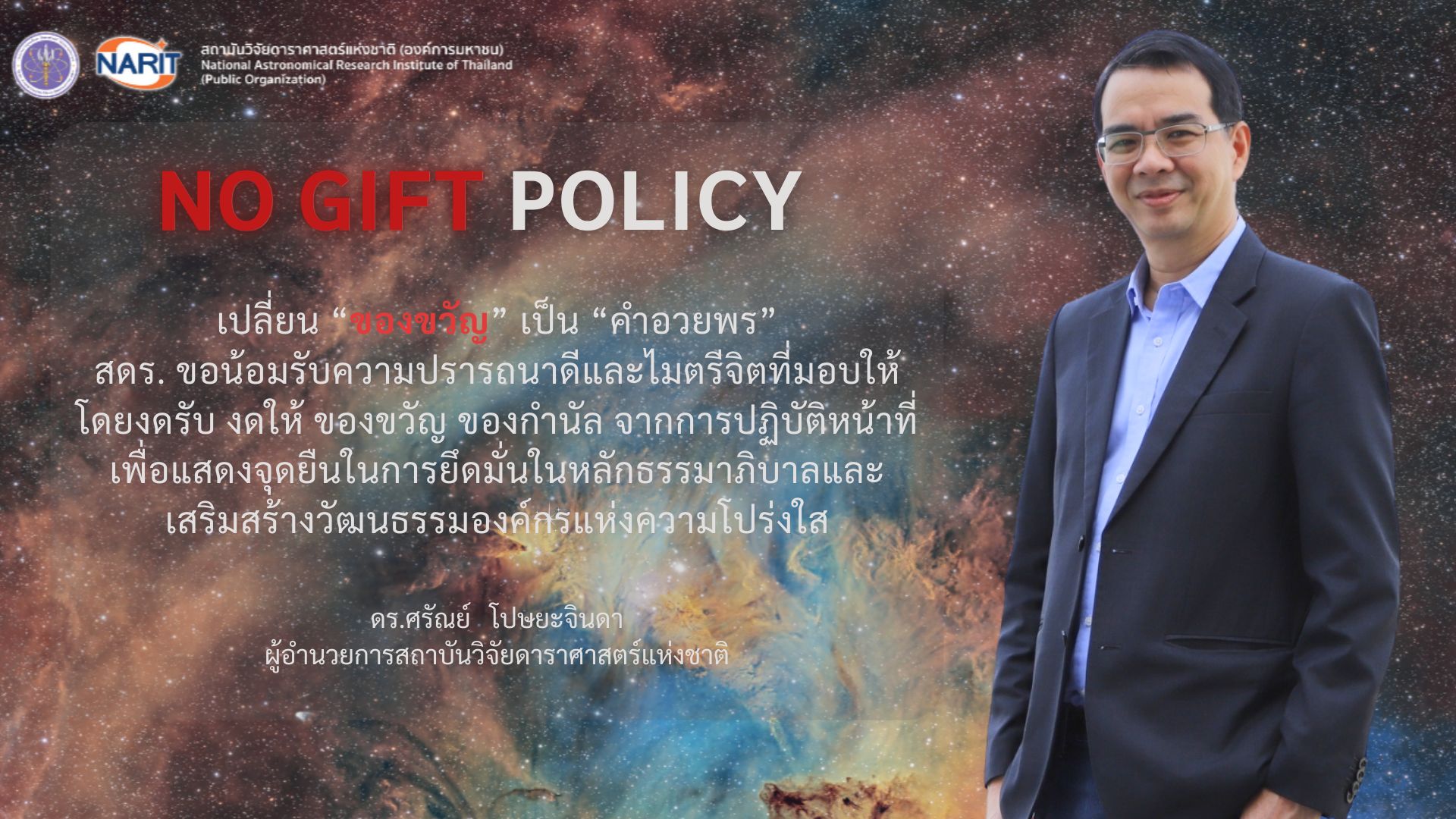Science goals for an Evryscope in the Arctic and Antarctic
In this section we highlight the reasons for building an Evryscope for the Arctic and Antarctic (EVA), enabling a wide range of science that cannot effectively be performed with the current mid-latitude system.
Optical time-domain astronomy programs can achieve uninterrupted coverage of their target fields by observing from space, constructing multiple observing sites spanning the globe, or by observing from near the North or South poles. Already developed Polar sites can perhaps offer the most attractive combination of ease of access and maintenance, at the cost of the hardening required for equipment to survive the extremely cold conditions. The continuously dark winter sky at the Poles offers an opportunity to build a new type of sky survey: one that continuously images half of the entire sky at minute timescales with no day-night window interruptions.
Advantages of observations from the polar regions
An EVA system will have many advantages compared to a similar system at mid-latitudes. In the following we list some of them in the context of exoplanet studies, but in fact they are applicable also to many other areas such as stellar variability, asteroseismology, microlensing, supernovae and more, as described in the following subsections. Some of them are:
- achieve a factor-of-five increase in sensitivity to habitable exoplanets because of the continuous winter darkness (Figure 1; Law et al. 2013)1 ,
- have the ability to detect exoplanet transits from long-period systems because of the lack of day-night window interruption,
- reach much smaller exoplanets than the current system because of reduced systematics, see below,
- achieve truly-continuous observations which are the only way to attain a near-certainty of detecting and following rare transients before, during and after the events,
- achieve better photometric systematics due to zero diurnal airmass variation, to generally low scintillation levels, and to other factors such as very low aerosols, water vapor, etc.
Here we list some science cases where EVA can play a key role, but clearly more are possible which will no doubt become clear as the science data will come in. The fact that continuous (i.e. days and weeks, as opposed to hours) observations of regular as well as transient variability have never been performed until now, certainly opens the door to the possibility of new, exciting discoveries. Each partner of the EVA consortium has its own science cases of interest, but much more will be available also to external collaborators.
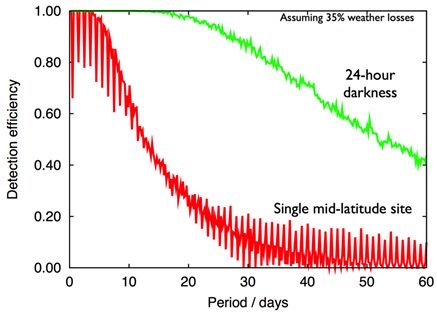
Figure 1: Factor-of-five increase in detection sensitivity to habitable exoplanets from a continuous winter darkness site with respect to a mid-latitude site.
1. Exoplanet surveys
Current exoplanet transit surveys are limited to fields of view of 100-1000 square degrees and so cannot effectively search for transits around large samples of stars that occur rarely in the sky. EVA would have an order-of-magnitude larger field of view than the next-largest current exoplanet surveys, along with an improved detection sensitivity of up to five times in long-period exoplanets because of the continuous winter coverage. This would enable the following exoplanet key projects:
First Arctic and Antarctic Large-Scale Survey for Habitable Planets Transiting White Dwarfs: At least 1/3 of WDs have metal contamination in their atmosphere suggesting that there could be small rocky bodies around them (e.g. Raddi et al. 2015)2 . Recent theoretical work has suggested that rocky debris could be indicative of migration processes that would bring rocky planets close enough to the WDs for transit detection (Veras et al. 2015)3 . The detection of a transiting planet around a WD gives us insights into the characteristics of planets in this exotic environment; the planetary system evolution during the star's red giant phase; and constraints on the properties of very small rocky bodies. White dwarfs (WDs) are attractive transit-search targets because their small size enables the detection of extremely small objects: rocky planets can occult the star, moon-sized objects give 10%-range transit signals, and large asteroids, groups of smaller objects (planetesimals) or dust clouds have been very recently detected around a metal polluted WD by Vanderburg et al. 2015 ; Croll et al. 2015, and may be a common scenario (Drake et al. 20104 , Agol 20115 , Law et al. 20156 ).
The small WD diameter reduces the transit time to minutes rather than hours for solar-type stars. Surveys thus require a very high observational duty cycle on each target to have a reasonable chance of detecting the transits. Since bright white dwarfs are rare, it has been very difficult to monitor more than one target at a time at the necessary cadence with conventional telescopes, let alone the 1,000+ targets required for a reasonable chance of detection. EVA gives us the field of view required to monitor the few-thousand brightest WDs at rapidly enough to detect transits; these are also the WDs bright enough (g<16.5) to feasibly follow-up exoplanet detections.
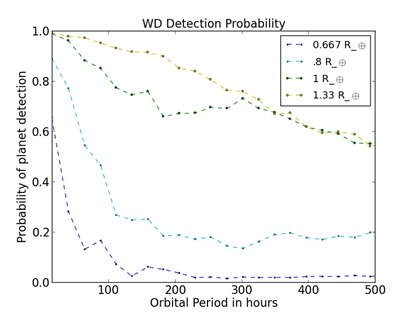
Figure 2: The probability of detecting a transiting rocky planet around a white dwarf in one month of EVA data, based on detailed simulations of our detection efficiency, detection algorithms and correlated noise.
EVA will be able to simultaneously and without daily interruption observe hundreds of WDs with better than 10% photometric precision in each two-minute exposure, and will cover more than 1000 WDs each night (Law et al. 2015). This will enable us to place limits on the populations of – or even discover – Mercury-sized objects in the ~day-orbital-period habitable zone of the WD (Figure 5). The geometric transit probability for habitable-zone planets around WDs is approximately 1%, so our initial 1000-white-dwarf survey will place the first 30%-level constraints on the fraction of habitable planets around WDs, even with no detections (Agol 2011). During this search, the EVA will also detect new eclipsing WD binaries and periodically variable WDs.
As our survey continues, we will expand to longer-period planets and to much larger target lists. Because the WDs are so small, even faint targets can be effectively searched for rocky-planet transits by searching for drop-outs where the white dwarf disappears for a few minutes. In a later stage of our search we will greatly expand our target list by searching for Earth-sized transiting planets around WDs too faint to be detected at high significance in each EVA exposure. Standard transit search algorithms like BLS (Kovács et al. 2002)7 search for significant drops in period-folded light curves. We will develop an equivalent algorithm that period-stacks the EVA images themselves, allowing us to search for periodic drop-outs of white dwarfs as faint as g=18.
Furthermore, spectroscopically-confirmed WD catalogs are still incomplete even at relatively bright magnitude limits, but here the rapid transit timescale assists us: a periodic two-minute-long flux reduction of a candidate white dwarf leaves very few possible false positives. In the final stage of our survey, we will search for repeated rapid dropouts, still further expanding our target list.
This WDs survey from the polar regions is perfectly complementary to the mid-latitude southern version we are currently conducting with Evryscope at CTIO.
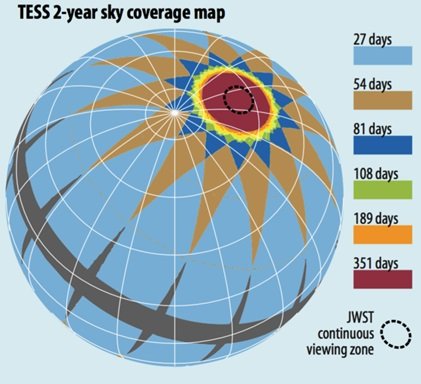
Figure 3: TESS 2-year sky coverage map. The JWST continuous viewing zone is overlapping with EVA continuous FoV.
TESS synergies: the TESS exoplanet-survey mission, the follow-up to the Kepler mission, will cover the entire sky in 2,000 square-degree chunks, starting in 2017. TESS will cover the majority of the sky for ~27 days, allowing the detection of planets with periods up to ~two weeks (Ricker et al. 2014)8 . The JWST continuous viewing zone partly overlaps with EVA continuous FoV during the winter (Figure 3). Given these unique TESS-EVA continuous viewing overlapping zones conditions, EVA can play a key role in TESS planetary yield enhancement. The planet population increases towards longer periods (e.g. Howard et al. 2012)9 and so a large fraction of the transit events TESS discovers will be single events from long-period planets that cannot be confirmed within the standard 27-day or 54-day stare periods (Figure 6). EVA's long-term dataset will provide the time baseline required to find multiple transit events from these planets, and the system's homogenous dataset across the entire Northern sky will enable a comprehensive search for transit events. The very-high-SNR TESS single transit events will allow us to pick out single targets and shorter lengths of EVA data to search for transits. This will greatly decrease the required significance of individual detections in EVA data, and allow the detection of much smaller planets than we can achieve with our untargeted surveys. Compared to other surveys, EVA's much higher cadence and longer-term coverage on each part of the Northern sky (as opposed to selected fields observed in sequence) will allow us to co-add hundreds or thousands of data points per phase-folded transit on even long-period planets – moving long-period planets as small as Neptune from unconfirmed single dips to confirmed planets, and thus greatly enhancing the TESS planet yield.
Bright Stars: Follow-up observations of transiting exoplanets, by either emission spectra during secondary eclipse or transmission spectroscopy, have revealed direct measurements of albedos, atmospheric composition, chemistry, and even phase curves showing features on the planetary cloud layers. These observations have been performed for only a very few planets, however, because they require a star which is significantly brighter than most narrow-field transit searches can currently monitor in their relatively narrow fields of view. Pushing to extremely bright naked-eye stars with EVA will require stacking reduced exposure-time images (to recover scintillation limited performance without saturation); we will perform test surveys to evaluate the feasibility of this search, which will be sensitive to long-term planets not accessible to the TESS mission (Figure 4).
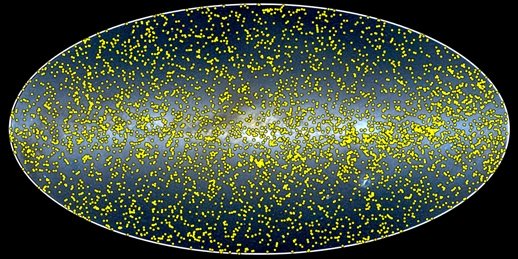
Figure 4: EVA survey will monitor 70,000 stars g<10 for increasing planetary yield around very bright stars, which will be amenable to follow up atmospheric characterization.
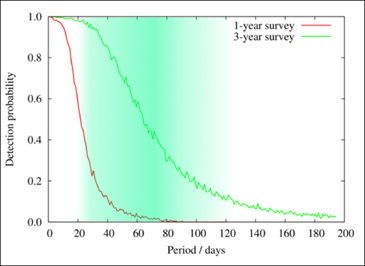
Figure 5: The probability of detecting a transiting rocky planet around an M-dwarf in 1 and 3 years of EVC data, based on detailed simulations of our detection efficiency, detection algorithms and correlated noise. Detection probability for EVA will be larger due to its 5×improved detection sensitivity to long-period exoplanets because of the continuous winter coverage.
Ms dwarfs: Despite being the most common stellar type in our galaxy, the transiting planetary population around M-dwarfs has not yet been explored in detail because of their extreme faintness compared to solar-type stars. Recent Kepler planetary population statistics suggest that the nearest transiting rocky planet in the habitable zone of an M-dwarf is less than 9pc away from us (Dressing et al. 2013)10 . However, to have a chance of finding these planets around M-dwarfs bright enough and nearby enough to use for characterization, a large sample of nearby, bright M-dwarfs must be covered. In turn, their random and sparse distribution across the sky means we must cover a very large sky area to reach a significant number of targets. Kepler can only cover a few faint thousand targets in this mass range (Dressing et al. 2013) and individually-targeted surveys like MEarth are also limited to a few thousand bright M-dwarfs at most (Berta et al. 2013)11 , while TESS can only reach the habitable zone for the targets in its relatively small continuous viewing zone. EVA is capable of simultaneously monitoring all bright, nearby late K stars and M-dwarfs (>5000) over years for transiting rocky planets. With few-millimagnitude photometric precision for all targets, and the ability to reach month-period objects in the habitable zones of those stars (Law et al. 2015), EVA is sensitive to planets as small as a few Earth radii around mid-M-dwarfs (Figure 5). In addition, EVA is also sensitive to giant planets around ~30000 M-dwarfs.
Nearby-star microlensing: Typical galactic exoplanet microlensing events occur as much shorter timescale bumps in week-scale stellar events. Most microlensing surveys (for example, OGLE; Udalski et al. 200812 ) have been performed with larger telescopes observing relatively the large population of background stars in small fields towards the galactic plane. However, occasional spectacular events around relatively nearby stars (Han 200813 ; Gaudi et al. 200814 ) have demonstrated that a sufficiently large-area survey has the opportunity to detect much closer events – and detect planets smaller than Earth in habitable-zone orbits (Figure 6). EVA’s few-minute temporal resolution and high photometric precision mean that planetary signatures will be directly detectable in the light curves (this has recently been demonstrated in smaller fields by Shvartzvald et al. 2014). We expect to detect several near-field microlensing events per year.
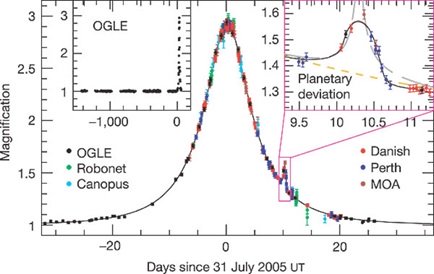
Figure 6: Rocky planet in 2.6AU orbit around M-dwarf (i=14.2) (Beaulieu et al. 2006).
.
2. Stellar variability
EVA will monitor the brightness of millions of stars across the sky each night, building up a multi-year, two-minute-cadence database of stellar activity for every star brighter than g=16.5 visible from the polar regions. This will enable the detection and characterization of unprecedented numbers of young and active stars, long-period eclipsing binaries that can be used to constrain the mass/radius relation, as well as the detection of a wide variety of other types of stellar variability (flares, stellar merger events, accreting compact objects, and exotic pulsators).
Exoplanet detection from eclipsing and pulsating stars: Transit, eclipse and pulsation timing variations allow us to measure the influence of other bodies in a system on the transiting/eclipsing/pulsating body’s orbit. Current surveys must target individually-interesting systems (e.g. Marsh et al. (2013))15 . EVA will monitor tens of thousands of eclipsing binaries and pulsating stars simultaneously, including minute-precision timing of every eclipse and pulse cycle. Performing this search from the polar regions will allow a push to much longer-period systems, much more comprehensive eclipse monitoring, and thus a much higher probability of planet detection.
Prominences and flares in white dwarf binaries: Prominences and flares are two of many atmospheric activities exhibited by our Sun. During these events, large amounts of material are released from the Sun’s surface, often thousand of kilometres up from the Sun’s photosphere. Prominences are arcs of gas, held above the surface of the Sun by a strong magnetic field. This gas, which contains cool and dense material, will appear as dark filaments against the Solar disk. Typical prominences erupt quickly and last several minutes to hours, but the quiescent ones can persist for weeks or months. Prominences are also observed in other stars such as in the young T Tauri stars, where the eruptions are thousand times more energetic and frequent than the ones of our Sun (Aarnio et al. 2012)16 . In close binaries, evidences of slingshot prominences have been recorded spectroscopically by several authors, e.g. QS Vir (Parsons et al. 2011)17 and SDSS J0039+0054 (Southworth et al. 2010)18 . The eruptive events in these binaries are known to originate from the active M dwarf companions.
A more complex and long-lived profile was recently found in another eclipsing WD binary, SDSS J1021+1744 (Irawati et al. 2016)19 . This system has an unusual light curve (Figure 7), believed to be caused by large prominences and the ejected materials which are trapped close to the Lagrangian L5 point in this binary. Using EVA, we will monitor other WD systems to detect the signature of prominences, as well as other variabilities in these binaries. The polar location of EVA will allow us the unprecedented ability to monitor a large number of successive eclipses, thus following in detail the temporal evolution of the prominences.
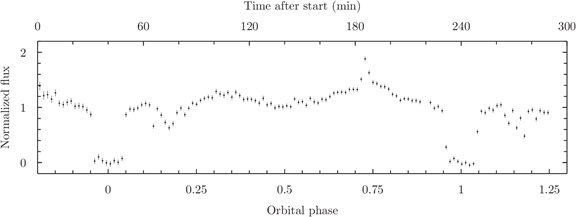
Figure 7: The light curve of SDSS J1021+1744 showing a flare and two consecutive eclipses with dips at orbital phase 0.18 and 1.15 (adapted from Irawati et al. 2016). The data is binned to match the EVA exposure time of ~120s.
3. Asteroseismology of oEA stars
The EVA project will provide, during the long polar night, millions of well sampled, long time-span, nearly continuous, gapless light curves of all types of pulsating stars across the H-R diagram. This will be a treasure trove for asteroseismology, which is based on the analysis of continuous, well sampled, uninterrupted light curves. This kind of data have determined, e.g., the great success of the KEPLER space mission, but in the case of EVA we will be monitoring a sample of stars larger by many orders of magnitude. The excellent spectral windows function of the EVA data will greatly simplify multiple period search and will provide the detection and deep study of oscillation spectra. We will then be able to generate accurate asteroseismic models for an unprecedented number of pulsating stars.
An example is the asteroseismic study of the semi-detached (Algol-type) eclipsing binaries with the mass-accreting pulsating components (so called oEA stars, Mkrtichian et al., 2007)20 . A typical continuous light curve of the Algol-type system WUMi obtained by AWCams. We will use pulsation variations extracted from the binary photometric curve. Figure 8 shows the 3-D hydrodynamic simulation of mass transfer in RZ Cas - a typical Algol-type system with oEA component. The unique peculiarity of these objects among other type of pulsating stars is the influence of cyclic variations of the magnetic activity of the Roche lobe-filling cool component on the generation of the high-mass transfer events. These transfer/accretion events influence the pulsational properties of mass-accreting stars and the forced pulsation amplitude and frequency variations. This physical process makes it possible to apply asteroseismic methods to study the short-term dynamical evolution of binary system, and the accretion- and tidal-driven acceleration or breaking of the components. We will be able to generate 3-D models of the mass transfer for different systems and determine the geometry of interaction of gas streams with the atmospheres of oEA stars.
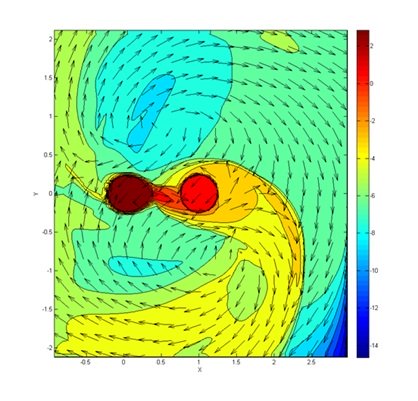
Figure 8 The 3-D gas-dynamic simulation of the mass-transfer in theAlgol-type system RZ Cas having a rapidly-pulsating (~22min) mass-accreting component. The gas streaming via the L1 point strikes the atmosphere of the oscillating star, causing strong differential rotation that could be measured by asterosesmic methods.
4. Asteroseismology of hot stars
The asteroseismic potential of wide-field surveys is rapidly being realised, with the use of pulsating red giants from Kepler/K2 data to map stellar populations being just one recent example. Of all the asteroseismic data available, it is the hot, massive stars that have received the least attention, yet these stars play a dominant role in the luminosity function and gas kinematics of the galaxy. Despite this, state-of-the-art contemporary photometric missions are ill-equipped to observe them. The Kepler Space Telescope has a narrow field of view, and is restricted to relatively bright targets. The part of the galaxy that the original Kepler mission hosts few young, massive stars. It’s successor mission, K2, looks instead along the ecliptic, however nearby O stars will be too bright to be observed. On the other hand, the upcoming TESS mission has greater sky coverage, but with the exception of small regions near the poles, it will only observe each patch of sky for 27 days, and most of the targets will have only 30-minute sampling. However the key science drivers for the asteroseismic study of hot stars require both longer monitoring (to explore pulsation period and amplitude stability) and ideally higher cadence to properly Nyquist sample the variations. EVA offers both, with high quality photometric data on these important stars at high cadence, and for long periods of time. There are three (inter-related) science drivers. Firstly, pulsations in high-mass stars can probe the extent of the convective core and allow us to measure the amount of overshoot. This is important because it can give important observational constraints on some poorly understood aspects of stellar evolution. Second is the exciting possibility of measuring internal rotation from its effects on pulsation frequencies; also an important aspect of stellar structure that is currently not well constrained by observations. Finally, the extent of diffusive mixing can be obtained, which for these stars is more important than convection in mixing material over the core boundary.
5. Extragalactic Transients and Supernovae
Supernovae and GRBs: The highest impact supernova discoveries have resulted from the most nearby events (distance <~20 Mpc). The detailed multi-wavelength studies enabled for these sources more than compensates for their relative rarity; the most prominent example is SN2011fe in M101 (Figure 9), which for the first time provided direct evidence of a white dwarf progenitor for a type Ia supernova (Nugent et al. 2011)21 . EVA will obtain high-cadence light curves even from before the supernova explosion, enabling a search for pre-outbursts and early-time shock breakout. Co-adding will push the depth to up to V=19 on hour timescales, sufficient to monitor nearby supernovae as they occur. The dataset will also provide imaging of prompt optical emission from ~10 GRBs per year on minute time scales, not only immediately following GRB triggers, but pre-imaging those fields on minute cadences before the explosion. Compared to mid-latitude sites, the continuous coverage available in the Arctic will greatly increase the probability of covering an event while the system is operating (also important for intrinsically rare events such as searching for gravitational wave electromagnetic counterparts), as well as allowing the first uninterrupted high-cadence light curves for all bright transients.
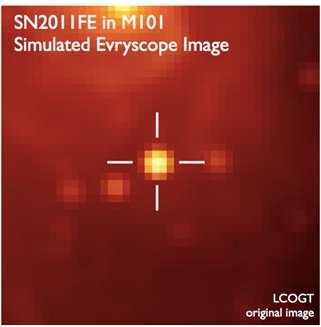
Figure 9: A simulated EVA image of SN2011fe, a very nearby bright supernova detected by the Palomar Transient Factory (Law et al. 2009). Based on an LCOGT image of the supernova soon after discovery (Nugent et al. 2011), with simulated EVA’s 13′′/pixel sampling and camera-lens point-spread-functions applied. The supernova is clearly distinguishable from the background structure of even this nearby, bright galaxy.
SN-rates in nearby galaxy clusters and implications for galaxy evolution and ICM metal enrichment: A conservative extrapolation of previous results by e.g. Gal-Yam et al. (2008)22 , based on a redshift-cut of z≈0.1 (corresponding to a mag-cut of V≈19), results in an estimate of ~100 SNe to be detected by EVA during one observation period (i.e. arctic/antarctic winter). In both fields-of-view (North & South) there are >30 Abell clusters with a robustly determined redshift below 0.1.
It is hence feasible to obtain statistically relevant samples of SNe in nearby cluster and field galaxies. Given that the redshifts/radial distances of these SNe can be determined either by prompt follow-up spectroscopy or by a restriction of the sample to standard-candle Type-Ia SNe, these samples can be used to:
a) derive SN-rates as functions of local/global environment (field vs. cluster, position within the cluster, cluster richness, cluster BM-type, galaxy type and stellar mass where known). The results will contribute to further constrain the SN-rate in different environments in the local Universe. This figure is crucial for models of metal enrichment in the IGM and ICM (see e.g. Aguirre et al. 200123 , Tornatore et al. 200424 ).
b) correlate SN-rates and star-formation rates and derive SFR-histories in low-z galaxy clusters. SN-rates for differently dense regions of galaxy clusters will facilitate more accurate studies of the correlation between SNe and star-formation activity (see Figure 10). In a wider context, the EVA findings will contribute to answering the general question of the correlation between the spectro-photometric and morphological evolution of galaxies and their environment.
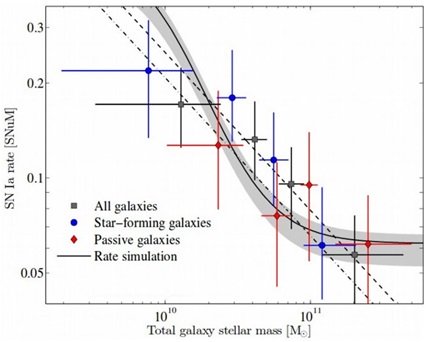
Figure 10: Rate of Type-Ia SNe vs. galaxy stellar mass for star-forming and passive galaxies (from Graur & Maoz, 2013)
c) derive rates/properties of intergalactic ("hostless") SNe in low-z galaxy clusters. Several studies published in the recent years describe robust detections of intra-cluster light (e.g. Lin & Mohr 200425 , Coccato et al. 201126 , Presotto et al. 201427 ). Consequently, the ubiquitous Type-Ia SNe are supposed to occur also outside galaxies but within clusters. Such rare events could be detected by EVA in a hitherto unmatched number, facilitating the first statistically robust study on the chemical history of intra-cluster light.
In addition, high-cadence photometry of SNe detected by EVA will allow to split up (at least the closer part of) the SN sample into sub-samples (beyond the established SN classification scheme), according to specific characteristics, e.g. the early onset phase of the SNe. These specific characteristics themselves will already be interesting to study. Moreover, they can again be set in context with the large-scale environment in order to search for correlations between properties at SN scale and larger scales.
Type Ia SNe at redshifts below 0.01 reach mags beyond 14. Based on the previous estimate for the number of SNe to be detected by EVA it is justified to expect at least a dozen of these events per polar winter.
Unknown or unexpected transients: EVA's very rapid cadence, extremely large field of view, and large étendue explores a new region of survey parameter space and may therefore reveal new unknown optical transients that would be rejected as cosmic rays or single-detection asteroids in longer-cadence surveys. For example, extreme millisecond radio transients with currently unknown origins have recently been discovered (e.g. Thornton et al. 2013 ; Coenen et al. 2014) (Figure 11). Due to their rarity and millisecond-scale speed, there is currently no way to get useful constraints on their optical brightness. EVA dataset will allow us to obtain simultaneous optical brightness limits (or even detections) on a minute-by-minute basis. This mode will also allow confirmation of transients detected in archival data taken at other wavelengths in new all-sky surveys such as the LWA (Hallinan 201428 ) and LOFAR (van Haarlen 201329 ).
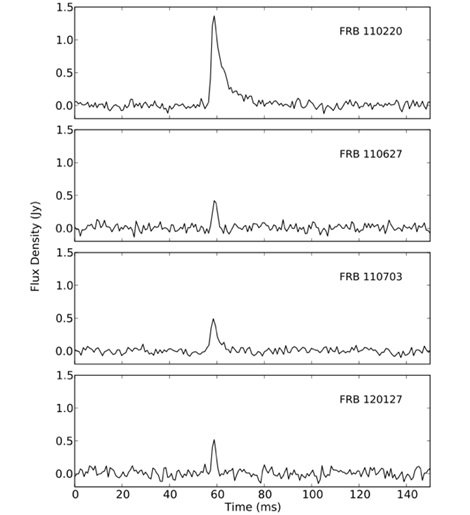
Figure 11: An example of millisecond radio transient detected by Thornton et al. (2013). EVA's very rapid cadence, extremely large field of view will allow to detect optical counterparts of such events
----------------------------------------------------------------------
1Law NM, Carlberg R, Salbi P, et al (2013) EXOPLANETS FROM THE ARCTIC: THE FIRST WIDE-FIELD SURVEY AT 80°N. Astron J 145:58. doi: 10.1088/0004-6256/145/3/58
2 Raddi R, Gansicke BT, Koester D, et al (2015) Likely detection of water-rich asteroid debris in a metal-polluted white dwarf. Mon Not R Astron Soc 450:2083–2093. doi: 10.1093/mnras/stv701
3Veras D, Eggl S, Gänsicke BT (2015) Sublimation-induced orbital perturbations of extrasolar active asteroids and comets: application to white dwarf systems. Mon Not R Astron Soc 452:1945–1957. doi: 10.1093/mnras/stv1417
4 Drake AJ, Beshore E, Catelan M, et al (2010) Discovery of eclipsing white dwarf systems in a search for Earth-size companions.
5 Agol E (2011) TRANSIT SURVEYS FOR EARTHS IN THE HABITABLE ZONES OF WHITE DWARFS.
6Law NM, Fors O, Ratzloff J, et al (2015a) The Evryscope: the first all-sky gigapixel-scale telescope.
7Kovács G, Zucker S, Mazeh T (2002) A box-fitting algorithm in the search for periodic transits. Astron Astrophys 391:369–377. doi: 10.1051/0004-6361:20020802
8 Ricker GR, Winn JN, Vanderspek R, et al (2014) Transiting Exoplanet Survey Satellite (TESS). In: Oschmann JM, Clampin M, Fazio GG, MacEwen HA (eds) Proceedings of the SPIE. p 914320
9Howard AW, Marcy GW, Bryson ST, et al (2012) PLANET OCCURRENCE WITHIN 0.25 AU OF SOLAR-TYPE STARS FROM KEPLER. Astrophys J Suppl Ser 201:15. doi: 10.1088/0067-0049/201/2/15
10Dressing CD, Charbonneau D (2013) THE OCCURRENCE RATE OF SMALL PLANETS AROUND SMALL STARS. Astrophys J 767:95. doi: 10.1088/0004-637X/767/1/95
11 Berta ZK, Irwin J, Charbonneau D (2013) CONSTRAINTS ON PLANET OCCURRENCE AROUND NEARBY MID-TO-LATE M DWARFS FROM THE MEARTH PROJECT. Astrophys J 775:91. doi: 10.1088/0004-637X/775/2/91
12 Udalski A, Szymanski MK, Soszynski I, Poleski R (2008) The Optical Gravitational Lensing Experiment. Final Reductions of the OGLE-III Data. Acta Astron 58:69–87.
13 Han C (2008) Near‐Field Microlensing from Wide‐Field Surveys. Astrophys J 681:806–813. doi: 10.1086/588083
14Gaudi BS, Patterson J, Spiegel DS, et al (2008) Discovery of a Very Bright, Nearby Gravitational Microlensing Event. Astrophys J 677:1268–1277. doi: 10.1086/529482
15Marsh TR, Parsons SG, Bours MCP, et al (2013) The planets around NN Serpentis: still there. Mon Not R Astron Soc 437:475–488. doi: 10.1093/mnras/stt1903
16 Aarnio A, Llama J, Jardine M, Gregory SG (2012) Mechanical equilibrium of hot, large-scale magnetic loops on T Tauri stars. Mon Not R Astron Soc 421:1797–1802. doi: 10.1111/j.1365-2966.2012.20434.x
17 Parsons SG, Marsh TR, Gänsicke BT, Tappert C (2011) A stellar prominence in the white dwarf/red dwarf binary QS Vir: evidence for a detached system. Mon Not R Astron Soc 412:2563–2570. doi: 10.1111/j.1365-2966.2010.18073.x
18 Southworth J, Marsh TR, Gänsicke BT, et al (2010) Orbital periods of cataclysmic variables identified by the SDSS. Astron Astrophys 524:A86. doi: 10.1051/0004-6361/201015633
19Irawati P, Richichi A, Bours MCP, et al (2016) A large, long-lived structure near the trojan L5 point in the post common-envelope binary SDSS J1021+1744. Mon Not R Astron Soc 456:2446.
20Mkrtichian DE, Kim S-L, Rodríguez E, et al (2007) The oEA Stars.
21Nugent PE, Sullivan M, Cenko SB, et al (2011) Supernova SN 2011fe from an exploding carbon-oxygen white dwarf star. Nature 480:344–7. doi: 10.1038/nature10644
22 Gal‐Yam A, Maoz D, Guhathakurta P, Filippenko A V. (2008) Supernovae in Low‐Redshift Galaxy Clusters: Observations by the Wise Observatory Optical Transient Search (WOOTS). Astrophys J 680:550–567. doi: 10.1086/587680
23Aguirre A, Hernquist L, Schaye J, et al (2001) Metal Enrichment of the Intergalactic Medium in Cosmological Simulations. Astrophys J 561:521–549. doi: 10.1086/323370
24 Tornatore L, Borgani S, Matteucci F, et al (2004) Simulating the metal enrichment of the intracluster medium. Mon Not R Astron Soc 349:L19–L24. doi: 10.1111/j.1365-2966.2004.07689.x
25 Lin Y, Mohr JJ (2004) K ‐band Properties of Galaxy Clusters and Groups: Brightest Cluster Galaxies and Intracluster Light. Astrophys J 617:879–895. doi: 10.1086/425412
26 Coccato L, Gerhard O, Arnaboldi M, Ventimiglia G (2011) Stellar population and the origin of intra-cluster stars around brightest cluster galaxies: the case of NGC 3311. Astron Astrophys 533:A138. doi: 10.1051/0004-6361/201117546
27Presotto V, Girardi M, Nonino M, et al (2014) Intracluster light properties in the CLASH-VLT cluster MACS J1206.2-0847. Astron Astrophys 565:A126. doi: 10.1051/0004-6361/201323251
28 Hallinan G (2014) The Owens Valley LWA.
29van Haarlem MP, Wise MW, Gunst AW, et al (2013) LOFAR: The LOw-Frequency ARray. Astron Astrophys 556:A2. doi: 10.1051/0004-6361/201220873
